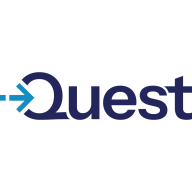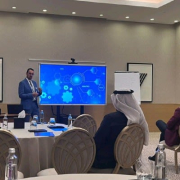

SAP Data Hub and erwin Data Intelligence are competing products in data management and intelligence. SAP Data Hub seems to have the upper hand with its ecosystem integration.
Features: SAP Data Hub offers strong data integration, orchestration, and processing capabilities, enabling comprehensive data landscapes. Erwin Data Intelligence focuses on data cataloging and governance, with detailed data lineage and automated metadata management.
Ease of Deployment and Customer Service: SAP Data Hub provides scalable and flexible deployment options for various enterprise architectures. Erwin Data Intelligence offers ease of use in governance and metadata management setup, supported by efficient customer service.
Pricing and ROI: SAP Data Hub has a higher setup cost, promising enterprise-grade ROI with extensive integrations and processing power. Erwin Data Intelligence has a more moderate initial cost, aiming for quicker ROI through its governance and intelligence capabilities.
| Product | Market Share (%) |
|---|---|
| erwin Data Intelligence | 1.8% |
| SAP Data Hub | 1.0% |
| Other | 97.2% |

| Company Size | Count |
|---|---|
| Small Business | 1 |
| Midsize Enterprise | 4 |
| Large Enterprise | 14 |
Erwin Data Intelligence drives automation, supports data catalog and literacy, and offers Smart Data Connectors for efficient metadata handling. Its customization flexibility and integration facilitate enhanced data governance, visualization, analysis, and compliance.
Erwin Data Intelligence offers automation scripts that accelerate development, integrated data cataloging, data profiling, and lineage analysis to streamline information management. Users appreciate its capability in metadata harvesting, code engineering, and infrastructure integration. The tool provides flexibility to enhance governance and data visualization. While it performs well, users have noted challenges with API robustness and interface complexity, and there are opportunities to improve workflow integration, AI features, and large dataset handling. Companies rely on it for metadata management, automation of metadata mappings, and data governance to support compliance and literacy.
What are the main features of Erwin Data Intelligence?In industries such as finance, healthcare, and retail, organizations implement Erwin Data Intelligence for efficient metadata management and governance. It assists in automating lineage and mapping, supporting ETL procedures while enhancing compliance and data literacy efforts. Its flexibility and integration support create valuable data insights and governance improvements.
The SAP® Data Hub solution enables sophisticated data operations management. It gives you the capability and flexibility to connect enterprise data and Big Data and gain a deep understanding of data and information processes across sources and systems throughout the distributed landscape. The unified solution provides visibility and control into data opportunities, integrating cloud and on-premise information and driving data agility and business value. Distributed processing power enables greater speed and efficiency.
We monitor all Data Governance reviews to prevent fraudulent reviews and keep review quality high. We do not post reviews by company employees or direct competitors. We validate each review for authenticity via cross-reference with LinkedIn, and personal follow-up with the reviewer when necessary.